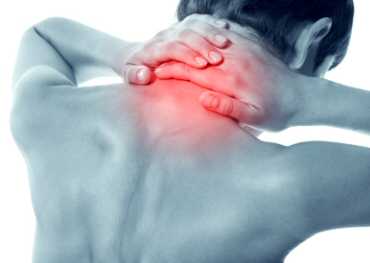Cervical Spondylosis Causes, Symptoms, Diagnosis and Treatment

What Is Cervical Spondylosis?
Also known as cervical osteoarthritis, cervical spondylosis is a condition which involves changes which occur to the bones, joints and discs of the neck.
These changes are due to the normal wear and tear which is associated with aging. As one ages, the disc of the cervical spine gradually break down and become stiffer. This may usually occur to those who are middle aged or elderly.
As the discs degenerate, spurs or abnormal growth may form on the bones of the neck. These growths in turn causes the narrowing of interior of the spinal column thereby causing cervical spinal stenosis.
Corrective surgery is known to be helpful in severe cases. If no symptoms are experienced, non-surgical treatments may be enough.
Causes Of Cervical Spondylosis:
As one ages, their body is subjected to change. Some of these changes causes cervical spondylosis.
These changes include:
- Dehydrated disks.
As spinal disk start drying out with age, there is more bone to bone contact between the vertebrae, thereby causing cervical spondylosis - Herniated disks.
Cracks often appear on the exterior of the spinal disk, leading to bulging (herniated) disks. This cause pressure on the spinal cord. - Bone spurs.
Disk degeneration may results in bone spurs. Spurs can sometimes pinch the spinal cord and nerve roots. - Stiff ligaments.
This decreases flexibility of the neck.
Factors Which May Increase The Risk Of Developing Cervical Spondylosis Include:
- Being overweight
- Lack of exercising
- Having a job that requires heavy lifting or a lot of bending and twisting
- Past neck injury
- Past spine surgery
- Ruptured or slipped disk
- Severe arthritis
- Small fractures to the spine from osteoporosis
Symptoms Of Cervical Spondylosis:
Many affected individuals do not experience any symptoms.
However, if symptoms do occur, they may include:
- Pain over the shoulder blade
- Weakness in muscles
- Neck stiffness that gets worse over time
- Numbness or abnormal sensations in the shoulders or arm
- Headaches, especially in the back of the head
- Loss of balance
- Pain or numbness in the legs
- Loss of control over the bladder or bowels (if there is pressure on the spinal cord)
Diagnosis Of Cervical Spondylosis:
Cervical spondylosis may be diagnosed via:
- Physical examination
- Imaging tests
Neck X-ray, which may show abnormalities, such as bone spurs, that indicate cervical spondylosis.
CT scan, which provides more detailed imaging, particularly of bones.
MRI, which helps pinpoint areas where nerves might be pinched.
Myelography, to provide more detailed X-ray or CT imaging - Nerve function tests
Treatment Of Cervical Spondylosis:
The cervical spondylosis treatment options are available:
- Medications
Nonsteroidal anti-inflammatory drugs.
o ibuprofen (Ibuprofen)
o naproxen sodium (Anaprox, Anaprox DS)
Corticosteroids.
o prednisone
Muscle relaxants.
o cyclobenzaprine (Amrix, Fexmid)
o methocarbamol (Robaxin)
Anti-seizure medications.
o gabapentin (Neurontin)
o pregabalin (Lyrica)
Antidepressants.
Prescription pain relievers
o Oxycodone (Percocet, Roxicet). - Therapy
- Acupuncture
- Surgery
By : Natural Health News




